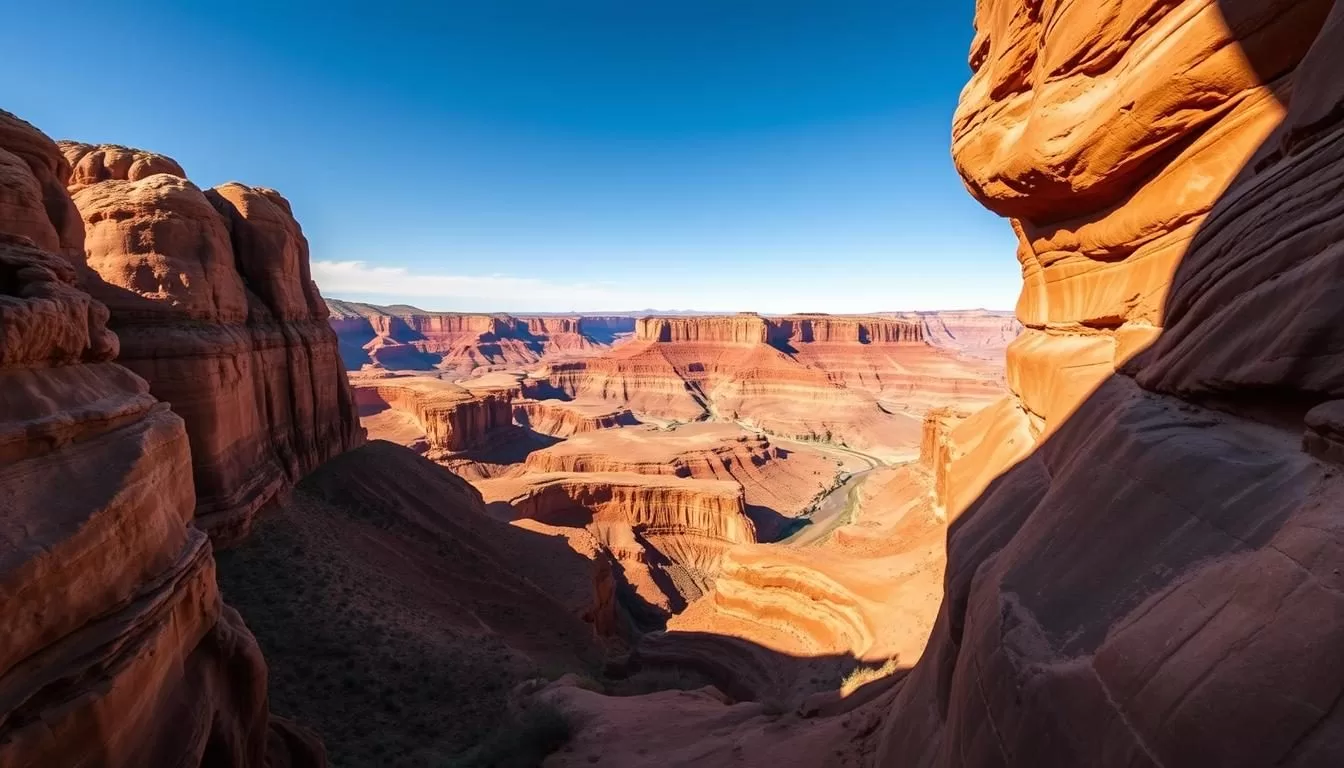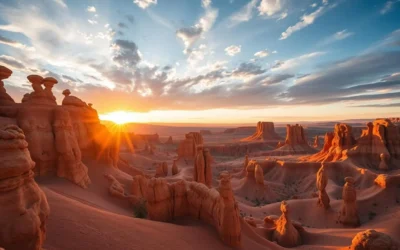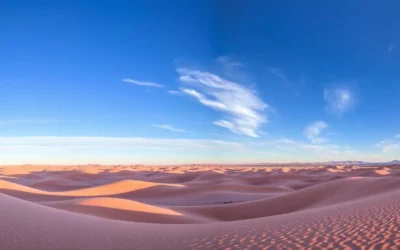✓ Accommodations✓ Flights✓ Rental Cars
Imagine embarking on a backpacking trip through one of the most spectacular wilderness areas in the American Southwest. Paria Canyon offers just that, with its towering sandstone walls, narrow slot canyons, and pristine wilderness. Located on the Utah/Arizona border, this 38-mile journey takes you through winding riverbeds between enormous Navajo sandstone walls, with water crossings that make for a unique hike.
The solitude and isolation of Paria Canyon are due to the limited number of permits issued daily, making it an ideal destination for those seeking a remote adventure. As you plan your trip, this comprehensive guide will cover everything you need to know, from permits and trailheads to gear recommendations and safety considerations.
Discovering Paria Canyon: A Natural Wonder
Paria Canyon, a majestic natural wonder, beckons adventurers and nature lovers alike to explore its vast expanse. Located on the Utah-Arizona border in the Paria Canyon-Vermillion Cliffs Wilderness, backpacking Paria Canyon involves 38 miles of hiking down the meandering riverbed in between two enormous walls of Navajo sandstone.
Location and Geography
The Paria Canyon is situated in a remote area, requiring visitors to be well-prepared for their journey. The canyon’s unique geography is characterized by its narrow passages and towering sandstone walls, which have been shaped by the persistent erosive action of the Paria River cutting through the Colorado Plateau over millions of years.
Geological Significance
The canyon represents millions of years of geological history, with its distinctive red and orange Navajo sandstone layers dating back to the Jurassic period. The colorful striations visible on the canyon walls tell the story of ancient sand dunes that were compressed and cemented over time, creating the dramatic formations we see today. Unique geological features include Slide Rock Arch, an enormous boulder that fell into the canyon and formed a natural tunnel. The slot canyon formation is a result of flash floods that have scoured the soft sandstone, creating narrow passages.
Geologists study Paria Canyon to understand erosion processes and the geological history of the Colorado Plateau region. The canyon showcases textbook examples of slot canyon formation, making it a fascinating site for geological study.
Planning Your Paria Canyon Adventure
To make the most of your trip to Paria Canyon, it’s crucial to plan ahead. This involves deciding on the best time to visit and determining how many days you should spend exploring this natural wonder.
Best Time to Visit
The best time to visit Paria Canyon depends on your preferences and what you want to experience. Generally, the canyon is accessible from spring to fall, with spring and fall being the most favorable seasons due to comfortable temperatures. Summer can be very hot, while winters are cold and may bring snow, potentially making the hike more challenging.
- Spring: Enjoy mild temperatures and blooming vegetation.
- Fall: Experience comfortable hiking conditions and scenic foliage.
- Summer: Be prepared for extreme heat and potential thunderstorms.
- Winter: Brace for cold conditions and possible snow, which may affect trail accessibility.
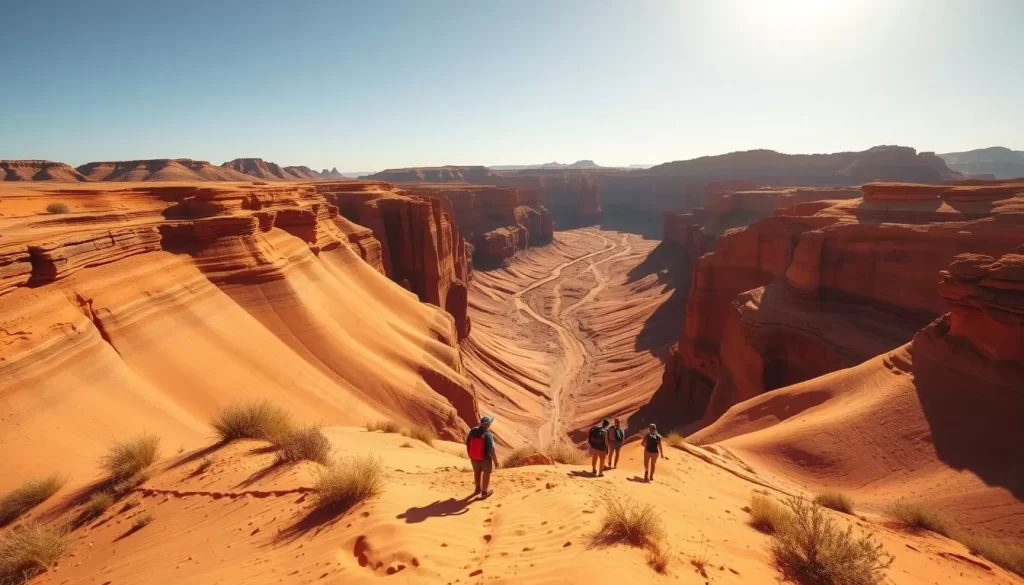
How Many Days to Spend
Determining the ideal duration for your Paria Canyon backpacking trip is crucial. Most experienced hikers recommend a 4-day, 3-night trip to fully appreciate the canyon’s beauty without feeling rushed.
- Allocating 4 days allows for a leisurely pace of 8-10 miles per day.
- This timeframe gives you ample opportunity to explore side canyons and capture the stunning scenery.
- If you’re short on time, a 3-day trip is possible but will require longer hiking days and less time for exploration.
- Consider adding an extra day if you plan to include Buckskin Gulch in your itinerary.
By planning your trip according to these guidelines, you’ll be able to enjoy a fulfilling Paria Canyon adventure that meets your expectations.
Permits and Regulations for Paria Canyon
Before you embark on your Paria Canyon journey, it’s essential to grasp the permit requirements and regulations. The Bureau of Land Management (BLM) oversees the access to this unique natural wonder, ensuring that the wilderness experience is preserved for all visitors.
Permit Application Process
The process of obtaining a permit for Paria Canyon involves a few key steps. First, you need to make a reservation, for which there is a $6 fee per group. It’s crucial to plan ahead because the BLM only allows a total of 20 people per day to enter the canyon on overnight permits across all trailheads. When making a reservation, you reserve the number of days you plan to spend in the canyon, not nights. This means if you’re planning a 3-day, 2-night trip, you’ll reserve 3 days.
The permit application process is competitive, especially during peak seasons, and permits may sell out quickly. It’s advisable to have your dates firm before applying since permits are non-transferable and non-refundable.
Costs and Quotas
Understanding the costs associated with visiting Paria Canyon is vital for planning. The permit costs include a $6 reservation fee per group, plus an additional $5 per person per day. If you’re bringing your dog, there’s an extra fee of $5 per dog per day. Your permit also includes a parking pass for your vehicle at either trailhead and wag bags for human waste disposal, which is mandatory in certain sections of the canyon.
| Fee Type | Cost | Description |
|---|---|---|
| Reservation Fee | $6 | Per group |
| Permit Fee | $5 per person per day | For each day in the canyon |
| Dog Fee | $5 per dog per day | For bringing dogs along |
The quota system is in place to ensure the solitude and wilderness experience of Paria Canyon. With only 20 people allowed per day across all trailheads for overnight trips, securing a permit can be challenging. Planning ahead and being flexible with your dates can improve your chances.
Trailheads and Access Points
Navigating Paria Canyon requires knowledge of its trailheads, including White House, Wire Pass, and Lee’s Ferry. These access points offer different starting and ending options for your hike, each with its unique characteristics and facilities.
White House Trailhead
The White House Trailhead is one of the primary access points for Paria Canyon. It’s known for its historical significance and serves as the starting point for many hikers. The trailhead is relatively remote, and you’ll need to be prepared for a rugged adventure.
Wire Pass Trailhead
The Wire Pass Trailhead offers another popular entry point into Paria Canyon. This trailhead is known for its scenic beauty and is a favorite among hikers looking to explore the canyon’s unique landscapes. Be prepared for a challenging hike, as the terrain can be rugged.
![]()
Lee’s Ferry
Lee’s Ferry serves as the endpoint for most Paria Canyon hikes, whether you begin at White House Trailhead or Wire Pass. Located at the confluence of the Paria and Colorado Rivers, Lee’s Ferry is accessible via a paved road and offers more developed facilities than the other trailheads. Key features include:
- A ranger station for information and guidance
- Restrooms and potable water for hiker convenience
- A boat ramp that serves as the launching point for Grand Canyon river trips
- Historical significance as an important Colorado River crossing point established in 1871 by John D. Lee
Your Paria Canyon permit includes a parking pass for Lee’s Ferry, allowing you to leave your vehicle there for the duration of your trip. When planning your hike, you’ll need to arrange transportation back to your starting point, either through a shuttle service or by leaving a vehicle at both ends.
Paria Canyon, Utah: Best Things to Do – Top Picks
For those planning a trip to Paria Canyon, there are several must-do experiences that will make your adventure unforgettable. The area is known for its breathtaking natural beauty, with activities ranging from hiking to exploring unique geological formations.
Hiking the Paria Narrows
Hiking the Paria Narrows is a highlight of any visit to Paria Canyon. This narrow, scenic hike follows the Paria River and offers breathtaking views of the surrounding landscape. The hike is characterized by its unique geological features, including towering walls and a serene riverbed. As you hike, you’ll have the opportunity to enjoy the tranquil atmosphere and take in the natural beauty of the area.
Exploring Buckskin Gulch
Buckskin Gulch is another must-visit destination within Paria Canyon. This extensive slot canyon is known for its impressive length and the opportunity it provides to explore the natural terrain. Visitors can hike through the gulch, experiencing its unique rock formations and the serene environment. The gulch is a great place to observe the geological history of the area, with visible layers of rock revealing the region’s past.
Visiting Wrather Arch
Wrather Arch is a notable natural arch located within Paria Canyon, accessible via a short side hike from the main river corridor. This arch is one of the largest in the American Southwest, spanning 165 feet and standing 85 feet high. To visit Wrather Arch, you can take a 25-minute hike up Wrather Canyon. While camping is not allowed in Wrather Canyon, there are excellent campsites near its mouth along the Paria River.
| Activity | Location | Duration |
|---|---|---|
| Hiking the Paria Narrows | Paria Canyon | Varies |
| Exploring Buckskin Gulch | Buckskin Gulch | Varies |
| Visiting Wrather Arch | Wrather Canyon | 25 minutes |
Popular Hiking Routes
Paria Canyon offers several hiking routes that cater to different skill levels and preferences. The most popular routes are the White House to Lee’s Ferry and Wire Pass to Lee’s Ferry trails.
White House to Lee’s Ferry (38 miles)
The White House to Lee’s Ferry route is a 38-mile journey that takes you through the beautiful Paria Canyon. This hike is considered moderate to challenging due to the terrain and potential obstacles. You will need to be prepared for variable weather conditions and possible encounters with deep water.
The trail begins at the White House Trailhead and follows the Paria River to Lee’s Ferry. The route includes several notable features, including the Paria Narrows and the confluence with the Paria River.
Wire Pass to Lee’s Ferry (46 miles)
The Wire Pass to Lee’s Ferry route is a 46-mile hike that offers the most comprehensive canyon experience. Starting at Wire Pass, you will travel through the entirety of Buckskin Gulch, one of the longest slot canyons in the world.
This challenging route begins with an immediate plunge into a slot canyon at Wire Pass, leading to Buckskin Gulch with its narrow passages and potential obstacles. On Day 1, you will need to cover 13.6 miles through Buckskin Gulch to reach the first safe camping area near the confluence with the Paria River. The route includes a notable obstacle about a mile before the confluence—a 15-20 foot downclimb with a fixed rope and moqui steps carved into the rock.
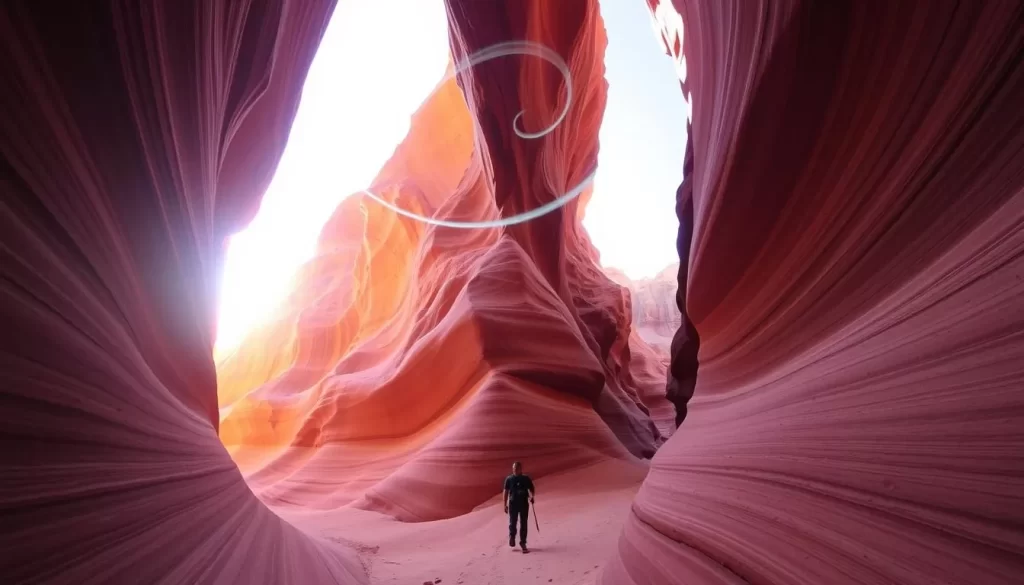
After joining the Paria River, the route follows the same path as the White House to Lee’s Ferry option but with one less day of hiking in the main canyon. This route is recommended for experienced backpackers who are comfortable with technical challenges and longer daily mileage, particularly on the first day of the hike.
Day Hiking Options in Paria Canyon
You don’t need to hike the entire Paria Canyon to enjoy its breathtaking scenery; day hikes are a great alternative. Paria Canyon offers several day hiking options that allow you to experience its natural beauty without committing to a multi-day trek.
Short Day Hikes from White House
For those starting from the White House Trailhead, there are opportunities for shorter day hikes that still offer a taste of Paria Canyon’s unique landscape. While specific trails may vary, this trailhead provides access to the canyon’s scenic views and geological formations. It’s essential to plan your day hike according to your fitness level and the trail conditions.
Exploring Buckskin Gulch as a Day Hike
Buckskin Gulch is a spectacular destination for a day hike, accessible from the Wire Pass Trailhead. The most popular option is the 3.4-mile round trip to the Middle Route exit, which allows you to experience the narrowest sections of the slot canyon. More ambitious hikers can attempt the 14.5-mile round trip to the confluence with the Paria River and back, though this requires an early start. Day hikers should be cautious of weather conditions, as flash floods in Buckskin Gulch can be extremely dangerous. It’s also crucial to carry sufficient water, at least 3 liters per person, as there are no reliable water sources within Buckskin Gulch itself.
Multi-Day Backpacking Itineraries
Embark on a multi-day backpacking adventure through Paria Canyon, one of Utah’s most spectacular natural wonders. Paria Canyon offers a unique backpacking experience with its breathtaking landscapes and challenging trails.
4-Day Classic Route
The 4-Day Classic Route from Wire Pass to Lee’s Ferry is a highlight of any trip to Paria Canyon. This route allows you to traverse the entirety of Buckskin Gulch, one of the longest slot canyons in the world, and is considered one of the best hikes in Utah. Starting at Wire Pass, you’ll navigate through the narrow passages of Buckskin Gulch, where deep water and obstacles may challenge your journey. The first day is particularly demanding due to the rugged terrain and the weight of your backpack, making the 13.6 miles to the confluence with the Paria River feel longer.
Camping near the Paria River on the first night provides a welcome respite. The subsequent days allow for a more leisurely exploration of Paria Canyon’s scenic beauty. This classic route is a must-experience for any serious backpacker.
| Day | Route | Distance |
|---|---|---|
| 1 | Wire Pass to Paria River Confluence | 13.6 miles |
| 2 | Paria River Confluence to Lee’s Ferry | 24.4 miles |
| 3-4 | Exploration and Camping | Varies |
Alternative Itineraries
For those seeking additional challenge or variety, several alternative Paria Canyon itineraries offer unique experiences. You can consider a 5-Day Wire Pass to Lee’s Ferry trip, which allows for a more relaxed pace, especially on the demanding first day through Buckskin Gulch.
- A 3-Day Wire Pass to White House trip lets you experience Buckskin Gulch and the upper portion of Paria Canyon.
- A 2-Day Buckskin Gulch Loop is a challenging but rewarding weekend trip, exiting via the Middle Route and returning above the desert plateau.
- The 5-Day Photographer’s Special itinerary adds an extra day to the classic route, allowing more time for photography and exploration of side canyons like Wrather Arch.
When planning your trip, always consider water availability, as sections of Buckskin Gulch and the Paria River can be dry depending on the season. 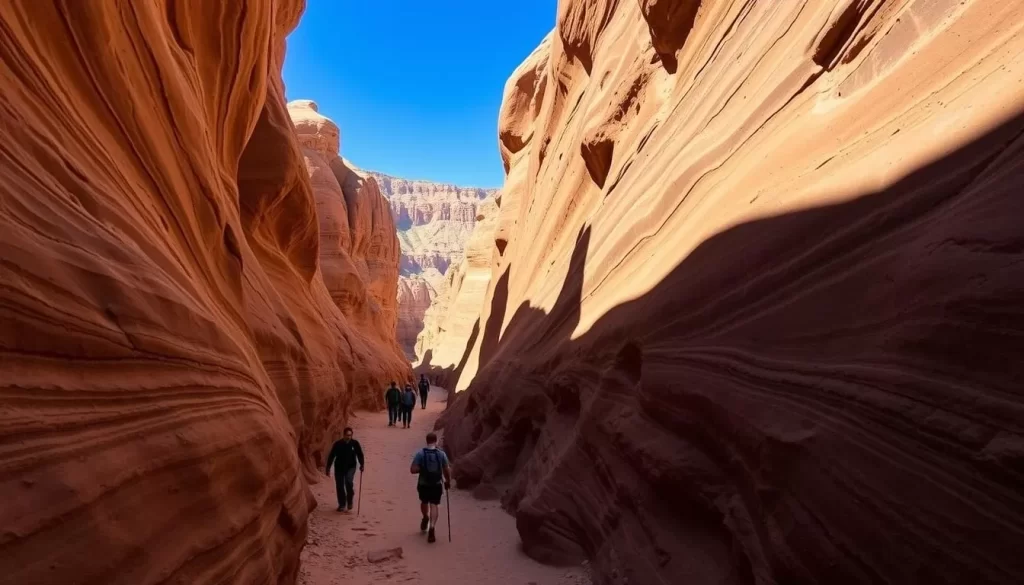
Water Sources and Management
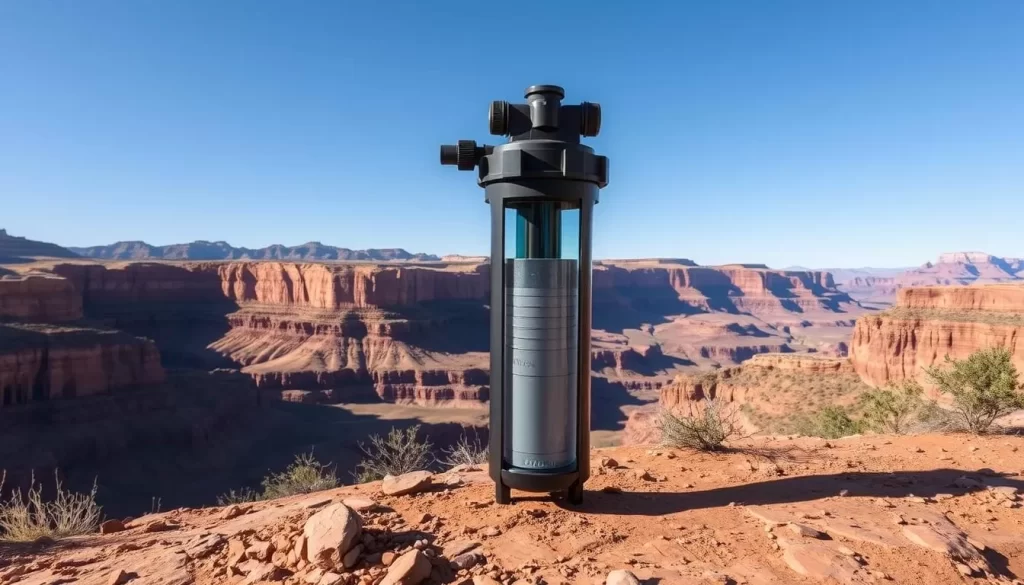
Understanding the intricacies of water sources in Paria Canyon is essential for hikers. The Paria River is a primary water source, but its condition can vary significantly due to weather conditions.
The river can be very silty, especially after rainfall, making water filtration challenging. However, during dry periods, the water is relatively clearer, making it easier to filter.
Springs and Reliable Water Points
While the Paria River is a main water source, there are other springs and water points along the trail. Identifying these sources is crucial for planning your hydration needs.
Some areas have more reliable water sources than others. It’s essential to know where these are located to ensure you have enough water for your journey.
- Pre-filtering through a bandana or buff can help remove larger sediment particles.
- Using alum powder can help settle silt, allowing for clearer water to be filtered.
Water Filtration Challenges
Filtering water from the Paria River presents unique challenges due to its high silt content, which can quickly clog standard backpacking water filters.
To manage this, consider using a gravity filter system like the Platypus GravityWorks for group water filtration. It’s also advisable to use both filtration and chemical purification to address potential contamination from upstream wildlife.
After rainfall, the river becomes extremely silty, making filtration more difficult. Planning your trip during dry periods can make water management easier.
Essential Gear for Paria Canyon
Paria Canyon’s unique terrain demands specific gear to ensure a safe and enjoyable experience. When venturing into this breathtaking landscape, it’s crucial to be well-prepared with the right equipment.
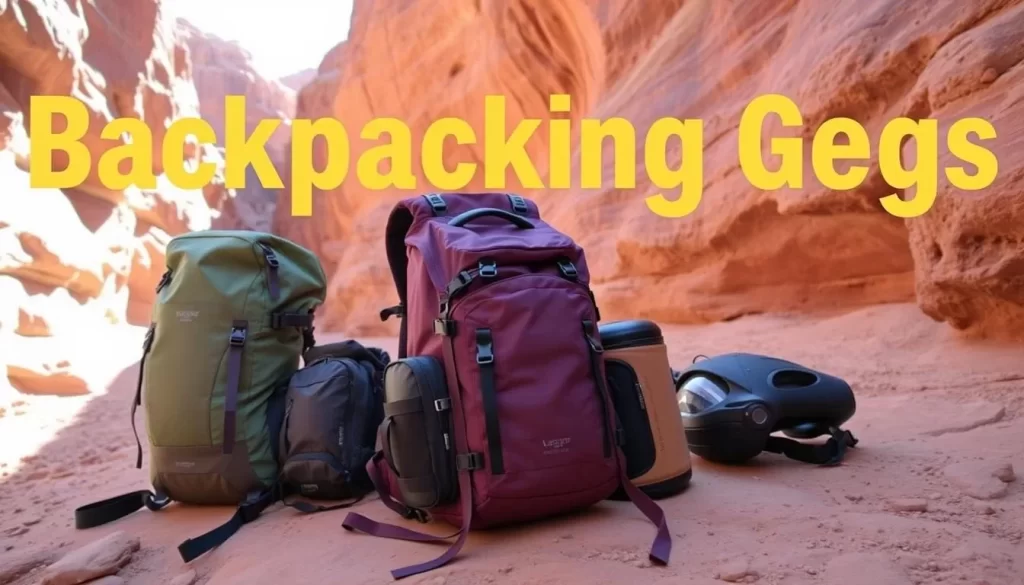
Footwear Recommendations
Choosing the right footwear is vital for navigating Paria Canyon’s rugged terrain. You’ll need sturdy, waterproof hiking boots or shoes that can handle river crossings and uneven terrain. Make sure your footwear is comfortable and provides adequate ankle support to prevent injuries.
Water Filtration Systems
A reliable water filtration system is essential for a backpacking trip through Paria Canyon. You’ll need to treat water from natural sources to make it safe for drinking. I would recommend using a filter or purification tablets to remove bacteria and viruses. It’s also crucial to manage human waste properly, using the provided Wag bags in the narrows sections.
Other Must-Have Items
In addition to proper footwear and water treatment, several other items are crucial for a successful backpacking trip. Trekking poles are highly recommended for stability during river crossings and navigating muck-filled sections. Other essentials include a wide-brimmed hat for sun protection, dry bags or waterproof pack liners to keep gear dry, and quick-dry clothing to stay comfortable.
Camping in Paria Canyon
As you plan your trip to Paria Canyon, understanding the camping options is crucial for a successful backpacking trip. Camping in this unique landscape requires careful consideration of the environment and regulations to preserve the area’s natural beauty.
Best Campsites Along the Route
When camping in Paria Canyon, it’s essential to choose campsites that are durable and minimize your impact on the environment. Campsites must be at least 200 feet away from springs and archaeological sites. Some areas have been used previously, so it’s advisable to camp on these durable surfaces rather than creating new campsites. The canyon’s landscape varies, offering different camping experiences along the route.
- Camp on durable surfaces that show signs of previous use.
- Avoid camping in Wrather Canyon, as it is prohibited.
- Be mindful of your surroundings and respect the natural and cultural resources.
Leave No Trace Practices
Leave No Trace principles are particularly important in Paria Canyon’s fragile desert ecosystem. To maintain the integrity of this natural wonder, campfires are strictly prohibited, and you should bring a lightweight backpacking stove for cooking. Additionally, packing out all trash, including food scraps and hygiene products, is crucial as these items do not decompose quickly in the desert environment.
- Use provided wag bags for human waste in narrow sections.
- In wider sections, dig catholes at least 200 feet from water sources and 6-8 inches deep.
- Respect wildlife and cultural resources by observing petroglyphs from a distance and storing food securely.
Safety Considerations
To ensure a safe and enjoyable experience in Paria Canyon, it’s crucial to understand the risks involved. Paria Canyon is known for its breathtaking landscapes, including the popular Buckskin Gulch and Wire Pass trails.
When hiking through this beautiful yet potentially hazardous area, make sure to be aware of your surroundings and the potential for flash floods.
Flash Flood Awareness
Flash floods are a significant risk in Paria Canyon. The canyon’s unique geography means that rain in distant areas, such as Bryce Canyon, can cause flooding downstream. To mitigate this risk, it’s essential to monitor weather conditions and be prepared to act quickly if necessary.
- Be aware of the weather forecast for the entire Paria watershed.
- Understand that rain in areas like Bryce Canyon can cause flooding in Paria Canyon.
- When on the trail, watch for signs of changing weather conditions.
I would recommend checking with the Rangers station for the latest information on weather conditions and flash flood potential.
Weather Monitoring
Effective weather monitoring is critical to safety in Paria Canyon. In the days leading up to your trip, check the weather forecast for Paria Canyon and the surrounding areas.
If the forecast indicates a chance of rain, contact the Rangers station to assess the safety of your planned hike. During your trip, continue to monitor the weather, and consider using a weather radio or satellite communication device to stay informed.
- Check weather forecasts regularly.
- Use a weather radio or satellite communication device like a Garmin inReach.
- Be vigilant during monsoon season (July-September).
Transportation and Logistics
To ensure a smooth trip to Paria Canyon, understanding your transportation options is crucial. The remote location of the canyon means that planning ahead is essential to avoid logistical issues during your trip.
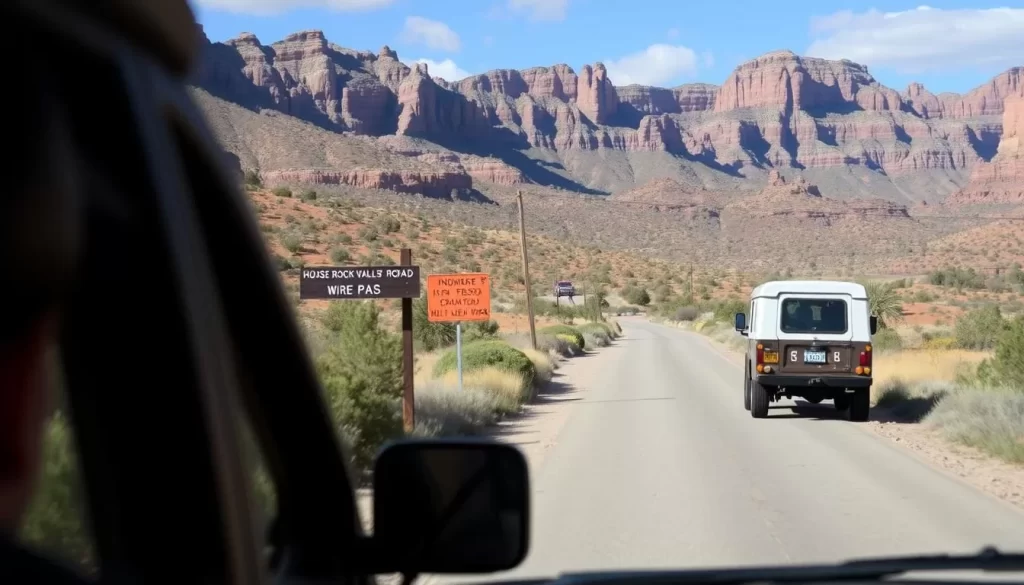
Shuttle Services
If you only have one car, consider leaving it at Lee’s Ferry and using a private shuttle service to reach your starting point at Wire Pass or White House Trailhead. This way, you won’t have to worry about shuttle logistics during your hike, and you’ll have a car waiting at the end of your trip.
For solo hikers or groups with a single vehicle, shuttle services provide a convenient solution. Be sure to research and book a reputable shuttle service in advance to ensure availability.
Self-Shuttle Options
Self-shuttling with two vehicles is the most flexible option for Paria Canyon hikers, although it requires additional driving time and fuel costs. The most efficient approach is to leave your primary vehicle at Lee’s Ferry, then drive a second vehicle to your starting trailhead (White House or Wire Pass) before beginning your hike.
The drive between Lee’s Ferry and White House Trailhead takes approximately 1 hour, while the drive to Wire Pass Trailhead takes about 1.5 hours. When self-shuttling, remember to pick up your permit first at the Paria Contact Station or another authorized location before dropping vehicles at trailheads.
Nearby Attractions
If you’re looking to explore more than just Paria Canyon, the nearby attractions are sure to impress. The region is home to a variety of natural wonders that enhance your Utah adventure.
Vermilion Cliffs National Monument
Located near Paria Canyon, Vermilion Cliffs National Monument is a striking area known for its vibrant red cliffs. The monument offers a unique landscape with its prehistoric rock formations. You can explore the area through various hiking trails and take in the breathtaking views. The monument is a national monument, protected for its natural and cultural significance.
As you visit, be sure to follow the regulations and respect the environment to preserve this natural wonder for future generations.
The Wave and Coyote Buttes
One of the most famous attractions near Paria Canyon is The Wave in Coyote Buttes North. This remarkable formation features swirling, multicolored sandstone that creates a wave-like appearance. To visit The Wave, you must obtain a permit, with only 64 issued per day through a lottery system.
Coyote Buttes South, while requiring a separate permit, offers similarly spectacular scenery with unique formations. You can access both areas via the Wire Pass Trailhead, which is also used for visiting The Wave. If you’re unable to secure a permit for The Wave, consider visiting White Pocket or exploring Buckskin Gulch for similar photogenic opportunities.
Starting your journey from the Wire Pass Trailhead, you’ll be on your way to experiencing these natural marvels.
Seasonal Highlights and Photography Tips
You’re planning a visit to Paria Canyon; understanding the seasonal changes can enhance your experience. The canyon’s beauty transforms throughout the year, offering unique photography opportunities with each season.
Spring and Fall Colors
During spring and fall, Paria Canyon comes alive with vibrant colors. The mild temperatures make these seasons ideal for hiking and photography. The foliage and blooming flowers in spring add a pop of color against the red rock formations, while fall brings a warm glow to the landscape.
Tips for Capturing Spring and Fall Colors
- Take advantage of the soft morning light to capture the colors.
- Use a polarizing filter to enhance the vibrancy of the foliage.
- Bracket your shots to capture the wide dynamic range of the scene.
Best Photography Spots
Paria Canyon offers numerous photography opportunities, but some locations stand out. The Paria Narrows, around mile 4-7 from the White House Trailhead, creates stunning light plays when sunbeams penetrate the narrow openings.
- Slide Rock Arch at mile 6.7 forms a natural frame when photographed from the downstream side.
- The confluence of Buckskin Gulch and the Paria River offers dramatic compositional opportunities.
- The amphitheaters around mile 15 create cathedral-like spaces with soaring walls.
- Wrather Arch in its side canyon provides a classic desert arch composition.
When photographing in the canyon, consider bringing trekking poles for stability and a lightweight tripod to manage challenging exposure conditions. Take your time to enjoy the breathtaking views and capture the perfect shot.
Conclusion
For those seeking a true backpacking challenge, Paria Canyon is an ideal choice, boasting some of the most spectacular canyon country in the United States. This unique destination offers one of the most rewarding wilderness experiences in the American Southwest, combining spectacular scenery with the perfect level of challenge for intermediate backpackers.
The permit system in place ensures solitude and preservation of this pristine environment, making advance planning essential but rewarding you with an uncrowded wilderness experience. As you prepare for your backpacking trip, understanding the importance of water management is crucial. Knowing where the reliable springs are located, bringing appropriate filtration systems, and always carrying more water than you think you’ll need are key to a successful trip.
Whether you choose the classic White House to Lee’s Ferry route or opt to include Buckskin Gulch for added adventure, proper preparation will ensure your safety and enjoyment as you hike through this breathtaking canyon. The ever-changing nature of the canyon means no two trips are ever the same—water levels, light conditions, and seasonal variations create a unique experience each time.
While challenging at times, a Paria Canyon backpacking trip delivers memories and photographs that will last a lifetime. As with all wilderness areas, remember that preservation of this special place depends on each visitor practicing Leave No Trace principles and respecting the fragile desert ecosystem.
By embracing these practices and being mindful of your impact, you can enjoy the beauty of Paria Canyon while ensuring its preservation for future generations.
The above is subject to change.
Check back often to TRAVEL.COM for the latest travel tips and deals.
